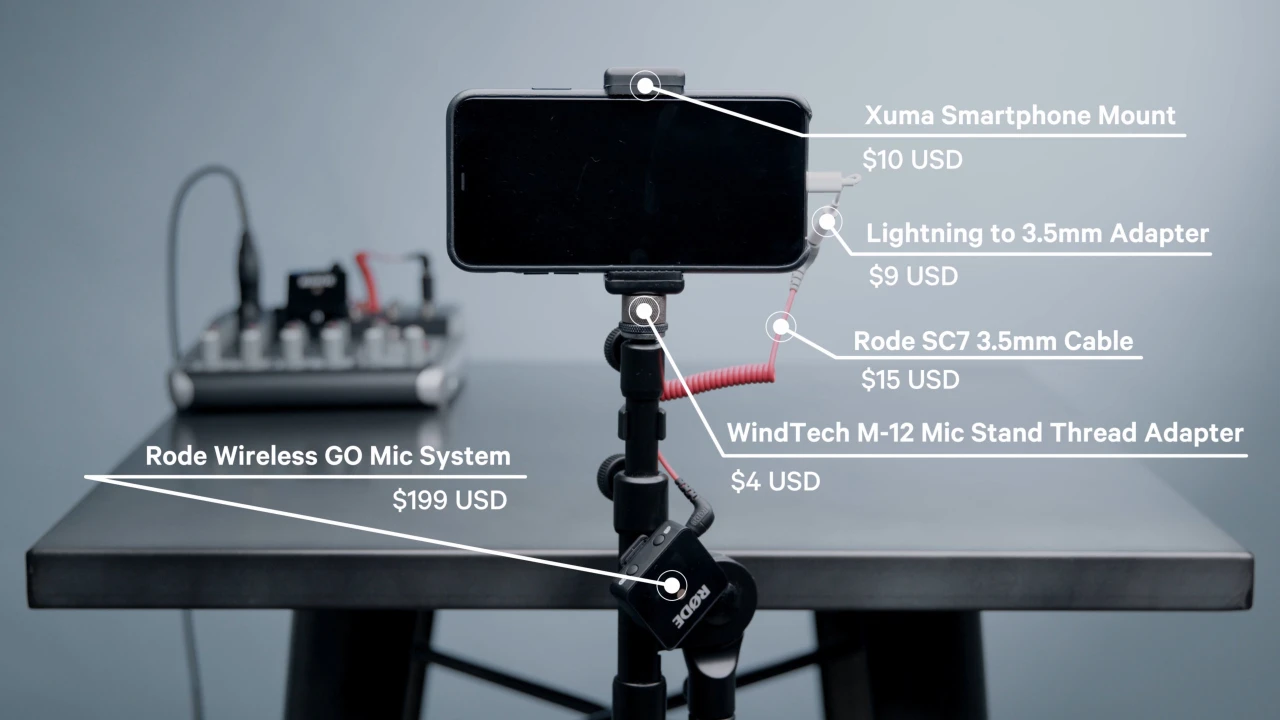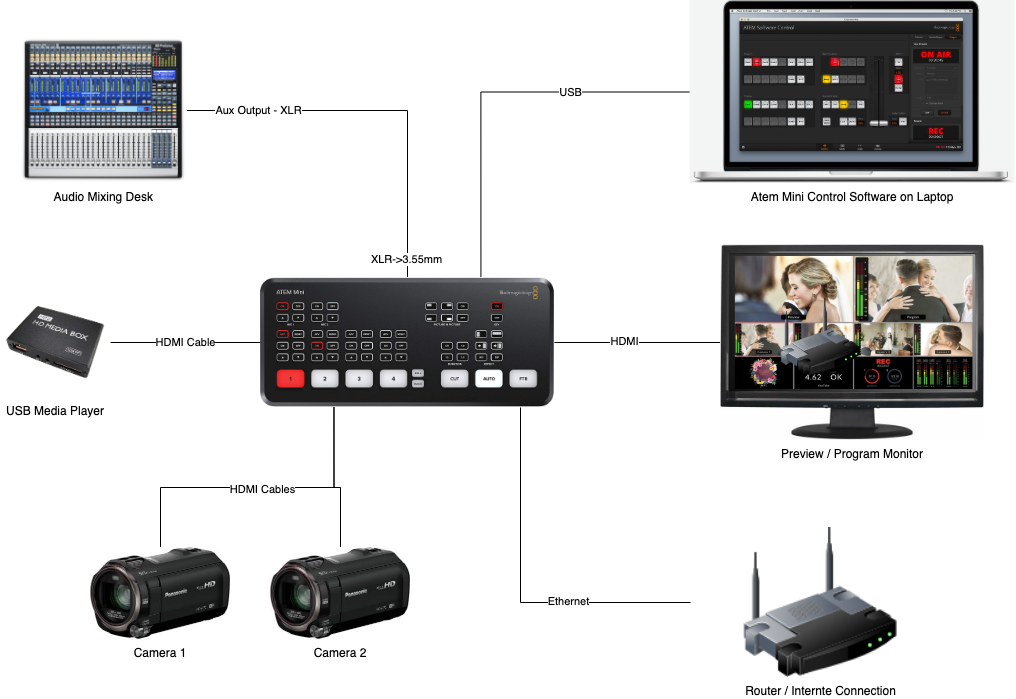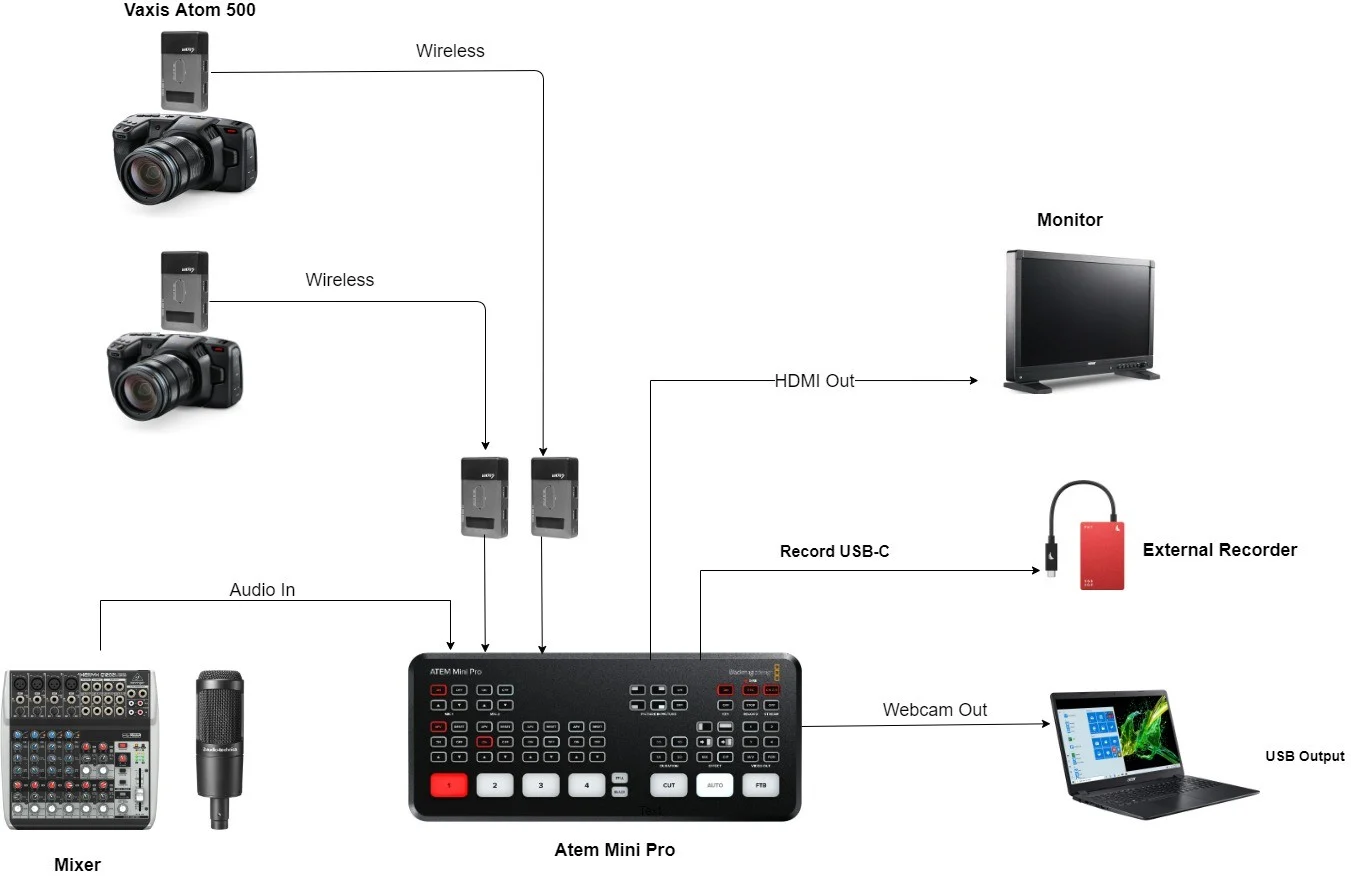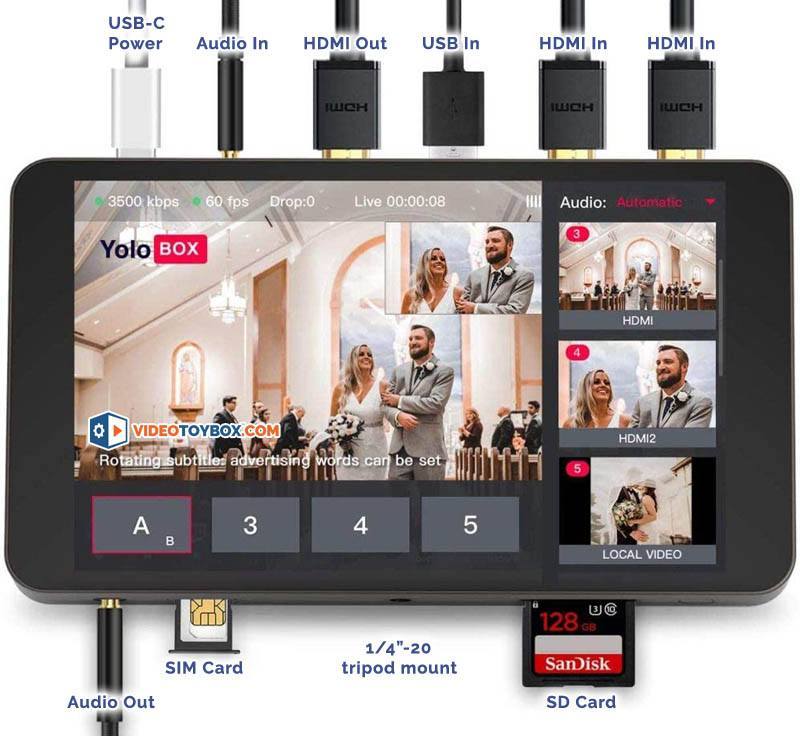CHURCH LIVE
STREAMING
EQUIPMENT : IDEAS : RECOMMENDATIONS
by Peter Burnett
BBC Trained, Broadcast Cameraman, Live Stream Expert & Content Creator
Peter@live-streaming.uk
079 7467 4815
This information is given with good intent and is not definative
Any recommendations depends on finance, technical ability and situation
Peter does not accept liability for recommendations or possible mis-information that may be on this page
VIDEO CAMERAS
There are so many...so many types and so many styles
Possible Camera Options:
Single camera, go for the Plus with battery pack, linked into local WiFi for live streaming, only controllable via iPad (kids love to control it), has audio in (plug radio mic receiver in there and transmitter on headphone socket on mixer), takes a very wide shot and then you can zoom into sections you want, cutting between shots, zooming in and out of shots, can record to memory card, can't overlay text etc, can follow a person (up to a point)
The following will need a vision mixer to cut between cameras
HDMI out on mini socket, built in screen, very simple, all automatic, 1080p HD output if needed, can be obtained cheap on EBay, lens can't be changed (so go for a good long zoom), very basic but OK quality
CANON XA10 (other models in the series)
Now an older camera but still good, mini HDMI out, built in screen, can be controlled manually, can have a Lanc (Local Application Control Bus System) zoom rocker control on tripod handle, lens can't be changed
DSLR (Digital Single Lens Reflex)
Many around, make sure it gives a clean HDMI signal out and doesn't have camera settings overlade on the output video signal
Good quality, can be controllable, can choose lenses, a small amount of lenses are zoomable and some can have remotes to control zoom
Lovely little cameras, not too good at low light, nice for small places...over drum kit or fixed on lead guitarist guitar
CCTV (SDI (Serial Digital Interface) out version)
Good as a safety camera, once fixed it stays there, very cheap
PTZ (Pan-Tilt-Zoom)
You can run a whole system on these (just add in the vision mixer), one opperator with one controller can opperate all the cameras, you can't really follow someone with these cameras (the controls are not precise enough), can be costly
LIGHTING
Film lighting is a wash accross the whole stage or where filming will take place. If this is acheived, the balancing of the cameras colour and exposure will be great. Otherwise the camera will be automatically adjusting between shots and angles
Coloured lights can be added now for texture
Proper LED panel lights will be able to change the colour temerature of the white - orangy white to bluey white (there is no rule to which you use, as long as all lights are set to the same)
DMX (a digital way of controling lanterns) is essential if you have coloured stage lights and effects

A very basic live stream using mobile phone...you do need to think about a good audio signal going in
The other option for a basic system is using a laptop, either with it's camera or an external web cam
...again think about the audio
AUDIO - either a feed from the mixing desk, radio system with mic as close to the
speaker as possible or plug mixing desk into transmitter

Two cameras into an ATEM mini (other vision mixers avaiable) , multi-screen monitor, being used as an
external camera input into laptop. Controlled also from laptop
Live streaming with vision mixer conected to local network

Cameras connected to vision mixer via radio TX & Rx (transmitter and receiver)
Live streaming via laptop (usb out, external camera in), laptop running OBS/Zoom/Facebook Live/Vimeo/vMix

Live streaming from the Blackmagic ATEM Mini

The Yolobox is a complete solution
- 2/4 cameras in (HDMI/USB) (depending on which model)
- Overlays (captions)
- Can mix in pre-recorded clips
- Takes a SIM card so can live stream all by itself
- Can mix audio from cameras/audio in/pre-recorded videos
POLICIES, RULES & GUIDES
- Always have a safety camera - wide angle camera to go to if no other shots are good
- Never show a shot with nobody in it - if someone walks away from the lectern, go to the safety shot
- Do not show a large number of empty chairs
- Do not show copywrite material or videos
- Do not show close up of children
- Do not use a countdown at the begining, a simple slide introduction and get into the live stream as soon as possible - you will loose incidental people with a countdown
- Show contact information at the end
- Try and have someone dedicated to the live comments made by viewers
- Create camera talk - "coming to camera one... now (this is when you press the button) on camera one"
- Do not show close-ups of people being ministered too
INFORMATION
- Live stream at minimum 720p25 (720 pixels down, 1280 across. The "p" in 720p stands for progressive scan, which means that the lines in the image are displayed in order from top to bottom. The fps (frames per second) being 25) maximum 1080p25 (HD - High Definition, 1080 pixels down, 1920 across)
- British video system is PAL (Phase Alternating Lines), American on NTSC
- British fps is 25Hz or 50Hz...25 is adequate for live streaming (american is 29.97 (30) or 59.94 (60))
- Any HDMI process (i.e. convert to or from) causes a delay
- Although units may frame match, try and make everything on the same resolution and fps
- HDMI cables are limited in length and are thicker than SDI - SDI are easier to use
- Generally no limit to SDI cable length
LIVE STREAM vs IMAG (Image MAGnification)
- For live stream shots, these are wider shots so people at home are aware of the whole room
- If it is close up shots all the time, it doesn't give the viewer a sense ofthe size of the room, people present
- For people to feel included, they have to be a part of the crowd and see things from their perspective
- IMAG is when your video mix is projected on the front screen/local TV's - Image MAGnification
- There is no point of putting a wide shot of the room on the big screen - everyone can see that anyway
- You put there shots/views that people can see
- Remember that every shot should help people...in worship or relating to the speaker
Any shots that could be distracting or cuts that don't fit/are sharp should be avoided:
- if the piano is the lead instrument, it should be on the screen
- at every start of a chorus or verse, the lead singer should be on the screen
RULE OF THIRDS
The rule of thirds is a composition guideline that helps create well-composed images by dividing an image into nine equal parts - the dividing lines gives you a guide to where:
- eye levels should be
- space for people to move into
- picture composition

